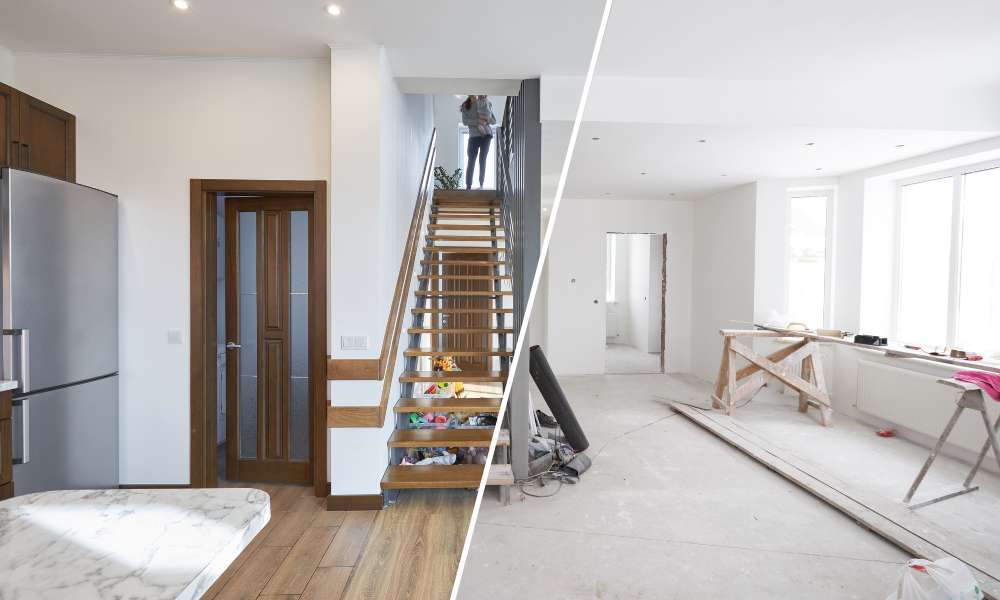Welcome to our comprehensive guide on how to clean basement walls before painting. Cleaning the walls of your basement is a crucial step in the painting process, as it ensures a smooth and long-lasting finish. Basement walls are prone to accumulating dust, dirt, mold, and mildew over time, which can affect the adhesion of paint and compromise the overall aesthetics of your space. In this guide, we will provide you with step-by-step instructions on how to properly clean your basement walls to prepare them for painting.
Why Is It Important To Clean Basement Walls Before Painting?
It is important to clean basement walls before painting for several reasons. First and foremost, cleaning the walls ensures that the paint adheres properly and lasts longer. Dirt, dust, and other debris can prevent the paint from bonding well with the surface, leading to peeling or chipping over time. By thoroughly cleaning the barricades, you create a smooth and clean surface for the paint to adhere to.
How Do I Prepare The Basement Walls For Cleaning?
Before cleaning the basement walls, it’s important to properly prepare them to ensure effective results. Start by removing any items or furniture from the barricades and clearing out any clutter that may be obstructing access. Next, thoroughly inspect the barricades for any signs of mold, mildew, or water damage. If you notice any of these issues, it’s crucial to address them before proceeding with cleaning.
Prepare the Workspace
Before embarking on the task of painting walls, it’s crucial to prepare the workspace adequately. Start by clearing the area around the barricades, ensuring enough room to maneuver and access all surfaces easily. Cover the floor with protective tarps or old sheets to prevent paint splatters and make cleanup easier afterward. Additionally, ensure good ventilation by opening windows or using fans to circulate air, as this helps in drying the barricades effectively after cleaning
Gather Your Supplies
Gathering the necessary supplies beforehand streamlines the cleaning process and ensures you have everything you need within reach. Equip yourself with sturdy cleaning gloves to protect your hands, along with a bucket, scrub brush, and a sponge or rag. For cleaning solutions, opt for mild detergents or specially formulated cleaners suitable for removing dirt and grime from cellar barricades. Having these supplies ready minimizes interruptions during cleaning and allows you to focus on the task at hand.
Remove Loose Dirt and Debris
Before you begin cleaning your cellar walls, it’s essential to remove loose dirt and debris. Start by sweeping the barricades with a dry brush to dislodge any dust, cobwebs, and loose particles. This step ensures that the surface is clear of loose materials that could interfere with the cleaning process. Using a vacuum with a brush attachment can also be effective in sucking up dirt from crevices and corners. By removing loose dirt and debris, you create a cleaner surface, making the subsequent cleaning steps more effective and ensuring better paint adhesion.
Mix Cleaning Solution
After clearing the walls of loose dirt and debris, the next step is to mix a cleaning solution. A good cleaning solution for cellar barricades can be made using household ingredients. Combine one part bleach with three parts water in a bucket to create a disinfecting mixture. Alternatively, for a less harsh option, mix a cup of white vinegar with a gallon of water. Both solutions are effective in removing mildew, stains, and grime from the barricades. Wearing gloves and protective eyewear is recommended to protect yourself from potential splashes. Properly mixing the cleaning solution is crucial for achieving a thorough clean before painting your cellar barricades.
Scrub the Walls
Dip a stiff-bristled brush or sponge into the solution and begin scrubbing the walls, starting from the top and working your way down. This technique helps to prevent streaks and ensures that any drips are cleaned as you go. Pay special attention to areas with visible stains or mildew, applying extra elbow grease as needed. Rinse the barricades periodically with clean water to remove any residue from the cleansing solution. Scrubbing the barricades thoroughly is a critical step in preparing them for a fresh coat of paint, as it removes any remaining dirt and ensures a smooth, clean surface for painting.
Rinse the Walls
Use a garden hose or a pressure washer to gently spray the walls, washing away any remaining dirt and dust. If using a pressure washer, ensure that it is set to a low-pressure setting to avoid damaging the barricades. Alternatively, you can use a bucket of water and a sponge or cloth to rinse the barricades manually. This step helps to eliminate any residual grime and prepares the surface for the next phase of cleansing. Properly rinsing the barricades is essential for achieving a smooth and even paint application.
Allow Walls to Dry
To clean concrete basement walls before painting, start by removing any debris or loose dirt with a broom or vacuum cleaner. Next, use a mixture of water and mild detergent to scrub away any built-up grime or stains. It is important to let the barricades air dry completely before applying any paint or primer. Additionally, using a dehumidifier in the basement can help speed up the drying process and create a more suitable environment for painting.
The Final Thought
Properly cleaning your basement walls before painting is essential to ensure a smooth and long-lasting finish. By following the steps outlined in this article, you can effectively remove dirt, mold, and other debris that may affect the paint application. Remember to wear protective gear and use appropriate cleansing solutions to avoid any health hazards. Taking the time to prepare your cellar walls will ultimately result in a professional-looking paint job that will enhance the overall appearance of your space. Don’t skip this crucial step – invest in proper cleansing to achieve the best results for your walls!
